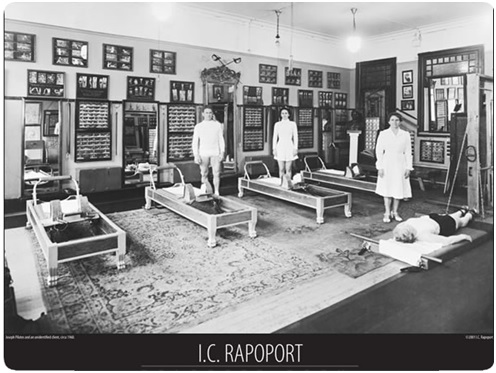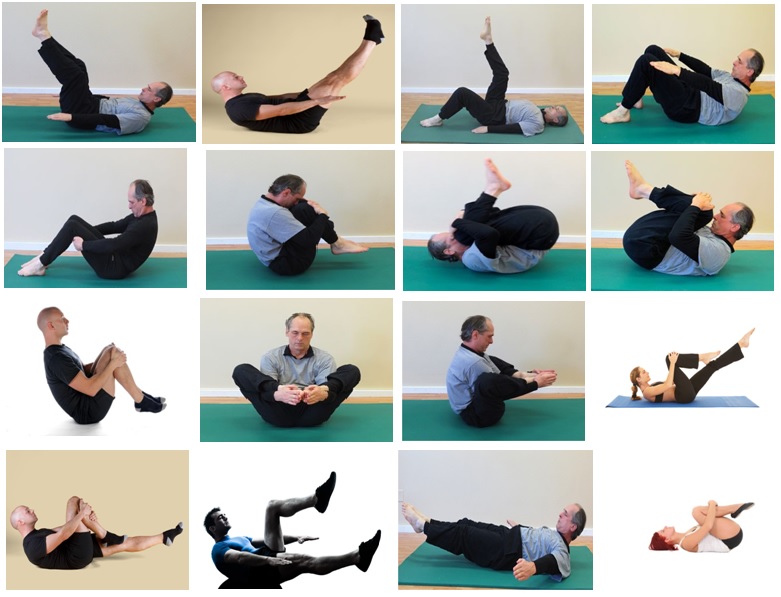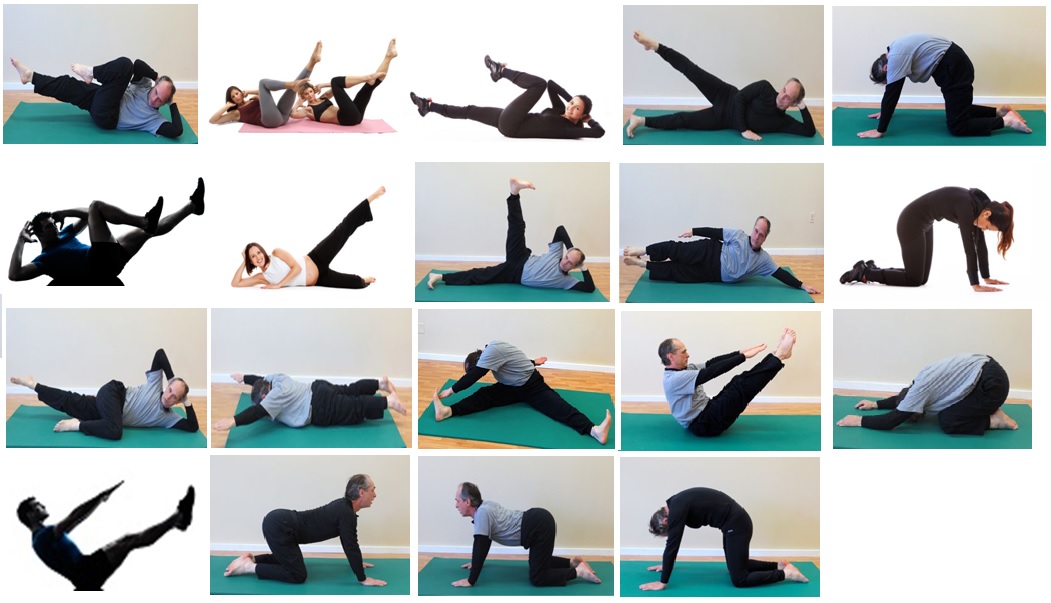Pilates: An Introduction
“We should recognize the mental functions of the mind and the physical limitations of the body so that complete coordination between them may be achieved.” – Joseph Pilates
Pilates originated from Hath Yoga. Pilates workout is a physical fitness system developed in the early 20th century by German-born Joseph Pilates. It is especially practiced in the United States (where Pilates lived, developed and taught his method) and the United Kingdom (where he lived and taught early stages of his method). Pilates was designed by Joseph Pilates, a physical-culturist from Mönchengladbach, Germany. His father was a prize-winning gymnast and his mother a naturopath. He studied both Eastern and Western forms of exercise including yoga. During the first half of the 20th century, he developed a system of exercises which were intended to strengthen the human mind and body. Pilates believed that mental and physical health are interrelated.
Yoga and pilates are two different of workouts with some similarities in enhancing the strength and posture but they are very different. The difference between yoga and pilates is that Yoga unites the body and soul as well as attains the state of perfect spiritual insight and tranquillity. On the other hand, pilates improves mental and physical well-being, increases flexibility, and strengthens muscles.
Pilates improves flexibility, builds strength and develops control and endurance in the whole human body. It puts emphasis on alignment, breathing, developing a strong powerhouse, and improving coordination and balance. Pilates’ system allows for different exercises to be modified in range of difficulty from beginner to advanced or to any other level, and also in terms of the instructor and practitioner’s specific goals and/or limitations. Intensity can be increased over time as the body conditions and adapts to the exercises.
Part scientist, mechanical genius and anatomist, Joseph Pilates accompanied his method by a variety of equipment he referred to as “Apparatus.” The Apparatus was designed to help accelerate the process of stretching, strengthening, body alignment and increased core strength started by the Mat work. The best-known and most popular piece today, the Reformer, was originally called the Universal Reformer, aptly named for “universally reforming the body.” Eventually a full complement of equipment and accessories was designed by Pilates, including the Cadillac, Wunda Chair, High “Electric” Chair, Spine Corrector, Ladder Barrel and Pedi-Pole.
Concentration
Pilates demands intense focus: “You have to concentrate on what you’re doing all the time. And you must concentrate on your entire body for smooth movements.
Control
All exercises are done with control with the muscles working to lift against gravity and the resistance of the springs and thereby control the movement of the body and the apparatus. The Pilates Method teaches you to be in control of your body and not at its mercy.
Centering
For practitioners to control their bodies, they must have a starting place: the center. The center is the focal point of the Pilates Method. Many Pilates teachers refer to the group of muscles in the center of the body—encompassing the abdomen, lower and upper back, hips, buttocks, and inner thighs—as the “powerhouse”. All movement in Pilates should begin from the powerhouse and flow outward to the limbs. This is the main focus of Pilates. It does this to strengthen the rest of the body.
Flow or efficiency of movement
Pilates technique asserts that physical energy exerted from the center should coordinate movements of the extremities: Pilates is flowing movement outward from a strong core.
Precision
Precision is essential to correct Pilates: “concentrate on the correct movements each time you exercise, lest you do them improperly and thus lose all the vital benefits of their value”. The focus is on doing one precise and perfect movement, rather than many halfhearted ones.
Breathing
Breathing is important in the Pilates method. In Return to Life, Pilates devotes a section of his introduction specifically to breathing “bodily house-cleaning with circulation”. He saw considerable value in increasing the intake of oxygen and the circulation of this oxygenated blood to every part of the body. This he saw as cleansing and invigorating. This is similar to yoga breathing. Proper full inhalation and complete exhalation were key to this.
Powerhouse:
The Powerhouse is activated effectively by hollowing of the deep abdominals, by drawing the navel back into the spine in a zipping-up motion, from the pubic bone to the breast bone thereby engaging the heels, the back of the inner thighs, the deep, lower-back muscles, and the muscles surrounding the sitting bones and tailbone area without inhibiting the natural function of the diaphragm—that is without the practitioner holding their breath either from lifting the chest upwards or contracting the chest.
In the sitting position the power engine elevates the torso and places the center of gravity at its highest and most efficient position; in prone position it elongates the body bidirectionally to reduce weight in the upper body; in supine position it elongates the body bidirectionally and places the center of gravity again at its highest and most efficient position.
Left to Right: Joseph H. Pilates, Mary Pilates (niece ) & Clara Pilates (Joe’s wife) 1934 – See more

http://pilatesreformer.com/faqs/pilates-history/
Top 10 Benefits of Pilates
- There are three muscle groups in the center of the body that are virtually ignored by every other exercise method.
- When these and other muscles in the ‘core’ are strengthened, everything changes, improving posture, balance, strength, mobility, and athletic performance.
- Pilates is so effective for improving athletic performance that elite athletes now include it in their conditioning programs.
- Most back problems disappear by strengthening core muscles, specifically the inner (transverse) abdominals. This Pilates idea has been confirmed by research and is a key principle in physical therapy.
- Paying attention to your movement rather than ignoring it with music or TV trains the body and the mind. This body/mind integration is a hallmark of the Pilates method.
- A Pilates workout makes you feel energized rather than exhausted due in part to an emphasis on breathing.
- Exercising with fluid and controlled movement, central to Pilates, eliminates most joint pain.
- Dynamic stretch found in Pilates is more effective than any other type of stretching.
- Strengthening core muscles is more effective for the relief of most back problems than surgery or medication.
- Pilates primarily involves eccentric contraction which is more beneficial than other muscle building techniques.
Commercial Pilates sources
http://ultimatepilatesworkouts.com/pilates-dvds-pilates-yoga-online
http://pilatesreformer.com/review-reformers/
http://www.pilateslessons.org/pilates-elder.html
Pilates postures are below: For more pilate postures refer the slides in Pilates sub menu




